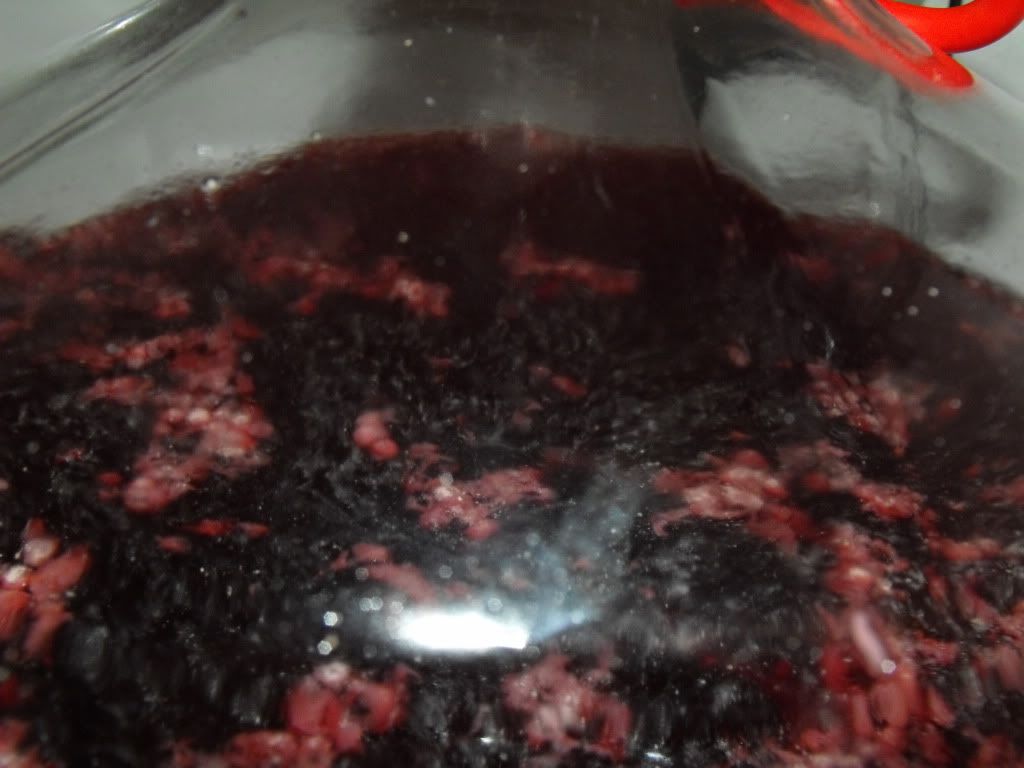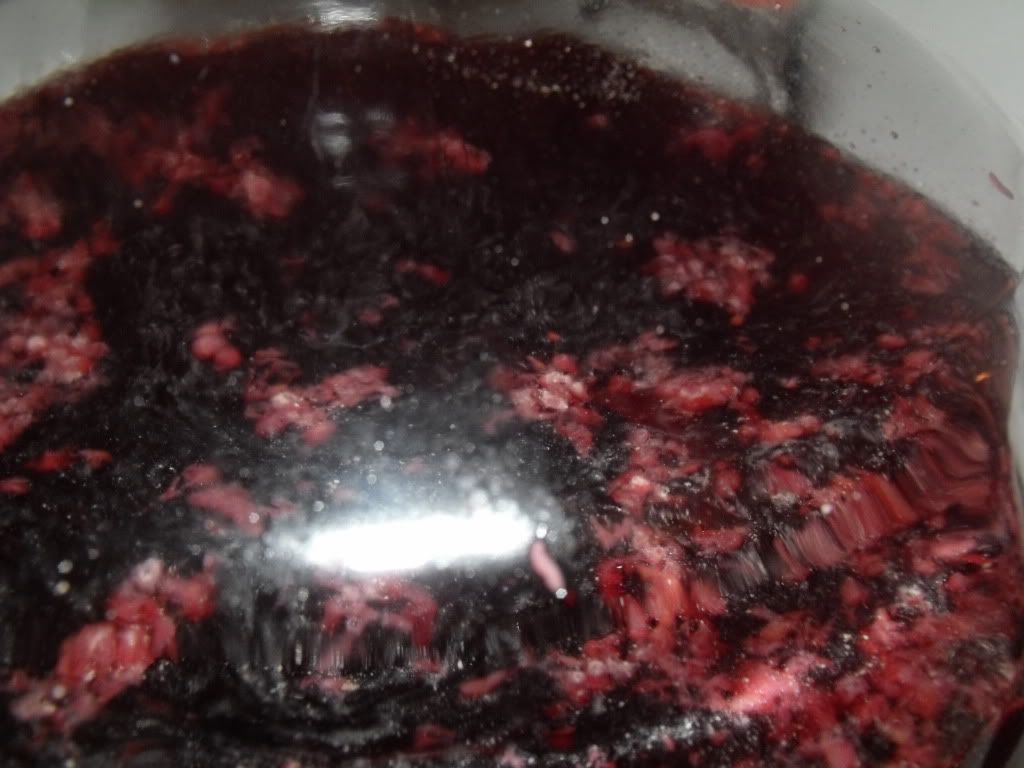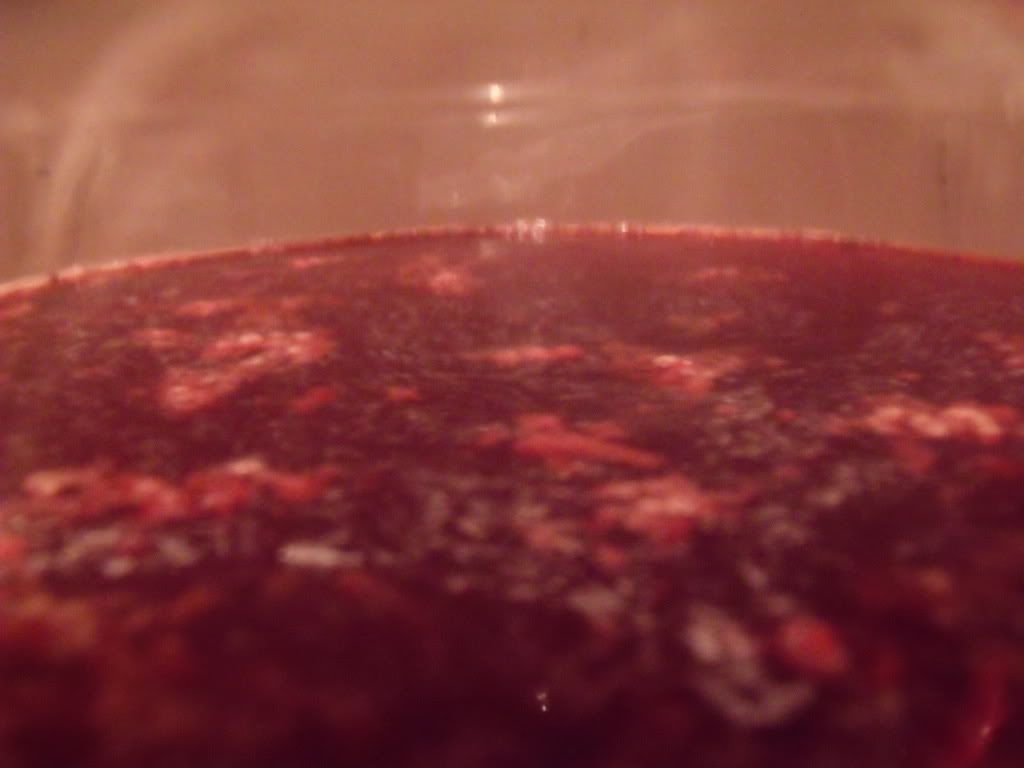Tyandam
New Member
First the pictures (they are pretty poor, I have not figured out how to take clear pictures through a carboy yet):



I've been homebrewing beer for a while, but this was my first mead of any kind. The recipe I used was:
4 gallons water
18 lb Orange blossom honey
12 lb raspberries
16g Lalvin 71B-1122
OG: 1.125
Current Gravity: 1.005
I used a staggered nutrient approach following the Mead FAQ post here:
http://home.comcast.net/~mzapx1/FAQ/SNAddition.pdf
Going against a little voice inside of me, I went with a no-boil method of preparing my must. I followed Ken Schram's method in The Compleat Meadmaker for adding fruit to the primary. His method was to boil the water for 5 minutes, turn off the heat and add the honey. Then pour the hot honey/water mixture over the fruit and chill after 5 minutes using an immersion chiller. This is exactly what I did. I carefully sanitized every piece of equipment I used.
Now, it appears after racking to the secondary that my mead is infected. The surface of the mead is covered in small white cultures beginning to form. Even though it may appear so from the pictures, it is not air bubbles, I am familiar with what that looks like. Ignore also the large pink chunks you see floating, those are pieces of raspberries that made it through the siphon tube.
My understanding was that mead was more resistant to infection, especially if it was in the 12-14% alcohol range (which I believe mine is). My question is whether or not there is anything I can do to save my mead, such as adding more honey to increase the alcohol level more, or something else?
It is still to young to taste what sort of infection it is. The only off-flavor I can really detect at this point is the "Listerine" note that I have read is typical for young meads. Thanks for your thoughts in advance.



I've been homebrewing beer for a while, but this was my first mead of any kind. The recipe I used was:
4 gallons water
18 lb Orange blossom honey
12 lb raspberries
16g Lalvin 71B-1122
OG: 1.125
Current Gravity: 1.005
I used a staggered nutrient approach following the Mead FAQ post here:
http://home.comcast.net/~mzapx1/FAQ/SNAddition.pdf
Going against a little voice inside of me, I went with a no-boil method of preparing my must. I followed Ken Schram's method in The Compleat Meadmaker for adding fruit to the primary. His method was to boil the water for 5 minutes, turn off the heat and add the honey. Then pour the hot honey/water mixture over the fruit and chill after 5 minutes using an immersion chiller. This is exactly what I did. I carefully sanitized every piece of equipment I used.
Now, it appears after racking to the secondary that my mead is infected. The surface of the mead is covered in small white cultures beginning to form. Even though it may appear so from the pictures, it is not air bubbles, I am familiar with what that looks like. Ignore also the large pink chunks you see floating, those are pieces of raspberries that made it through the siphon tube.
My understanding was that mead was more resistant to infection, especially if it was in the 12-14% alcohol range (which I believe mine is). My question is whether or not there is anything I can do to save my mead, such as adding more honey to increase the alcohol level more, or something else?
It is still to young to taste what sort of infection it is. The only off-flavor I can really detect at this point is the "Listerine" note that I have read is typical for young meads. Thanks for your thoughts in advance.


